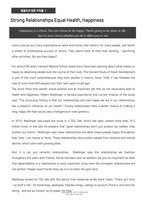INFORMATION-BASED AND CONFORMITY-BASED DELIGHT OF ONLINE TRIBALISM: THE EFFECT ON SELF- AND SOCIAL IDENTITY MODERATED BY USER ACTIVENESS
* 본 문서는 배포용으로 복사 및 편집이 불가합니다.
서지정보
ㆍ발행기관 : 글로벌지식마케팅경영학회(GFMC)
ㆍ수록지정보 : Global Marketing Conference
ㆍ저자명 : Jie Meng
ㆍ저자명 : Jie Meng
영어 초록
Theoretical BackgroundOnline tribalism is an unofficial network in virtual community due to common interests and affiliation to a topic, a belief, a figure, a ritual, or a culture (A. Taute and Sierra 2014, Badrinarayanan, Sierra and Taute 2014, Hamilton and Hewer 2010). In an interconnected world, consumers influence each other by initiating, spreading, appraising, receiving and internalising beliefs via social network and shape self - attitude and information status (Hilder 2004). These widely-existing phenomena suggest more efforts to be completed to address the gaps in knowledge in the following aspects: First, the information dissemination process should be understood with a stronger support of quantifying approaches to bring forward a systematic understanding to accommodate a wide range of drives for the complex social learning and assimilating procedure (Feliciani, Flache and Tolsma 2017, Macy et al. 2003, Huet, Deffuant and Jager 2008). For example, many qualitative research such as digital anthropology and netnography abound to explain the motivations, process, and outcomes of disseminating messages in the texture of social group (Flache and Macy 2011, Granovetter 1977). As the consequence, many tentative explanations have attempted to focus on the utilities of information circulation (Dupor, Kitamura and Tsuruga 2010, Gruhl et al. 2004, Kim and Baek 2014) and social influences (Gupta and Kim 2004, Kim and Baek 2014) but ended up with only incapability of modelling and quantifying the process. Within this trend, notably, two factors underpinning the changes in virtual community, i.e., individual’s information utility, motivation of seeking for conformity, remains a secret. In addition, it’s unclear that why and how active customers behave different from inactive ones from a perspective of information flow and social learning. Second, there is a lack of knowledge of how the intrinsic connections and dialectical dynamic between self-solicited individuals take place and adapt in the growth and evolution. With the tool of digitals, paradoxically, the essential ambiguity of digital openness and closure (Phelps et al. 2004), viability and tribalism (A. Taute and Sierra 2014, Badrinarayanan et al. 2014, Hamilton, Schlosser and Chen 2017), enculturation and acculturation, devastatingly remains under-investigated. Among these various perspectives to explain and model the dynamics of online community and social learning, there should exist a general framework that combines decisive bases of recipients and senders with various motives and constraints, with both subjectivity and objectivity. Opinion dissemination can therefore be understood not only as an objective procedure, but also with subjective intervention of participants where cognitive, psychological, and sociocultural factors intertwine to influence the collective learning pattern. Thirdly, some contextual findings are to be tested how the conditional relations may be established under different social settings. For example, theories show that engaged consumers usually exhibit enhanced consumer loyalty, satisfaction, empowerment, connection, emotional bonding, trust and commitment. However, literature rarely provide an answer that within a social group, how are traditions, patterns, communications, rewards, and punishments formed and evolved to lead to either conformity or dispute. To address the above gaps, this research adopts an interactive approach to deconstruct information into inputs (motivation, potential), action (interpersonal connection), and output (utility and identity). This research delivers several simulated experiments to identify how the evolution of customer opinions evolves out various patterns of self-efficacy and social recognition. The author assembles four aspects of input variables, including information utility, accordance utility, self-efficacy, and social status of consumers, and test the overall information prosperity and propensity of the social earning with different activeness levels.
Findings
The analytical firstly results show that active individuals exist in social group as the information hubs to dismiss the information and share a higher level of delight of owning knowledge and over time, become similar in knowledge standard. Consequently, a wider connection with and influence on mass audience of active members usually lead to a higher psychographic gain of attitudinal accordance compared with inactive and isolated ones in group. Secondly, at the individual level, the author found that the activeness in tribal group obviously result in a higher level of both self-recognition and social recognition on average. This pattern is consistent with vast literature in ethnography. And the relation between the activeness level and the self- and social-recognition level is positive. While at the aggregate level, it’s investigated that active individuals of online tribes have a stronger inclination, evidenced by a stronger propensity of spreading message, to further generate messages to impact other more profoundly when compared with inactive ones. The simulation experiment also indicated that a few contextual relations between variables, e.g., information-based and accordance -based delights, self-recognition and social recognition, information prosperity and transmission propensity, etc., moderated by the member activeness. It’s also found that extreme active individuals have a much higher marginal increase in accordance originated from the growing information volume owned in the process of influencing the society. Not coincidentally, their overall social recognition and attitudinal accordance from the group are significantly higher by the growth of personal knowledge.
Conclusions
This research contributes to the literature on the drives of tribal dynamics and its’ consequences on the changes of information valence and attitudinal changes and further to this, how the engagement level of individuals will influence these micro and macro outcomes. Notably, by adopting a self-reasoning method, the motives and outcomes are incorporated in a simulated method to develop not only the individual and the aggregate level of outcomes. This study also bears methodological significance by examining a series of hypotheses under the setting of a simulated online community. These findings suggest a series of contextual causality moderated between the characteristics, intentions and actions.
참고 자료
없음"Global Marketing Conference"의 다른 논문
 THE ROLES OF GREEN PACKAGING IN UGLY FOOD PURCHASE INTE..22페이지
THE ROLES OF GREEN PACKAGING IN UGLY FOOD PURCHASE INTE..22페이지 THE IMPACT OF INDUCED AWE ON ETHICAL TOURIST BEHAVIORS5페이지
THE IMPACT OF INDUCED AWE ON ETHICAL TOURIST BEHAVIORS5페이지 A BIBLIOMETRIC ANALYSIS OF SPIRITUAL TOURISM RESEARCH15페이지
A BIBLIOMETRIC ANALYSIS OF SPIRITUAL TOURISM RESEARCH15페이지 SOCIAL NETWORK ANALYSIS AND RESPONSE TIME TESTING: CONS..11페이지
SOCIAL NETWORK ANALYSIS AND RESPONSE TIME TESTING: CONS..11페이지 THE EFFECTS OF PARA-SOCIAL INTERACTION ON ONLINE CELEBR..3페이지
THE EFFECTS OF PARA-SOCIAL INTERACTION ON ONLINE CELEBR..3페이지 THE INFLUENCE OF OPINION LEADERS ON DAILY DEALS USER’S ..3페이지
THE INFLUENCE OF OPINION LEADERS ON DAILY DEALS USER’S ..3페이지 HOW IMMERSIVE RETAILING AFFECTS CONSUMERS’ URGE TO BUY:..6페이지
HOW IMMERSIVE RETAILING AFFECTS CONSUMERS’ URGE TO BUY:..6페이지 KEY TO SUPERSTARDOM IN A GLOBALISED MARKET: THE ROLE OF..6페이지
KEY TO SUPERSTARDOM IN A GLOBALISED MARKET: THE ROLE OF..6페이지 A POST-PANDEMIC LOOK AT TOURISTS’ PERCEIVED COOLNESS OF..4페이지
A POST-PANDEMIC LOOK AT TOURISTS’ PERCEIVED COOLNESS OF..4페이지 EXTRACTING OFFLINE RETAIL SHOPPING PATTERNS: OLLABORATI..5페이지
EXTRACTING OFFLINE RETAIL SHOPPING PATTERNS: OLLABORATI..5페이지

























